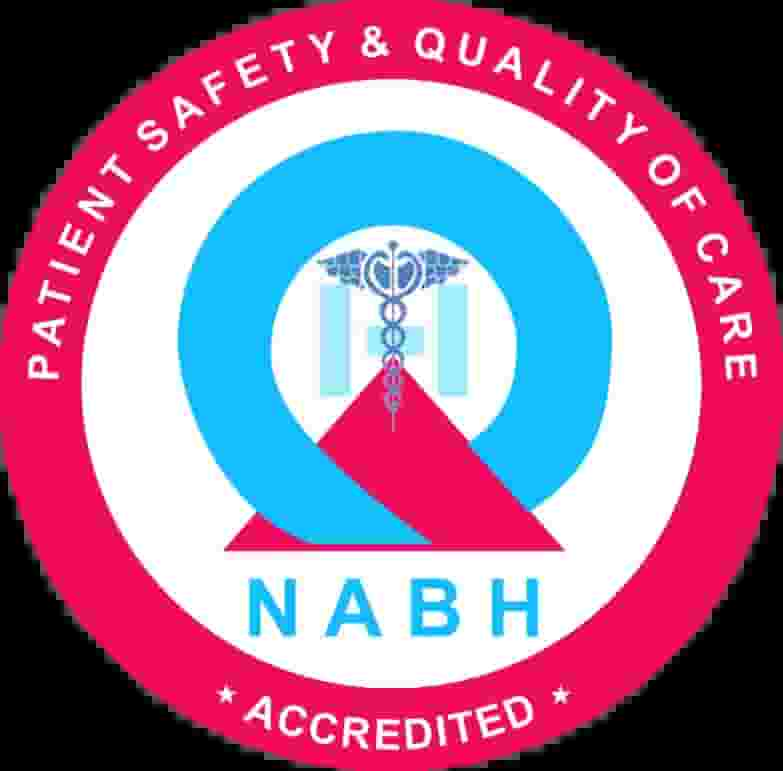
The Life Force Within: A Comprehensive Guide to the HB (Hemoglobin) Test
09 Sep, 2023
 Healthtrip Team
Healthtrip TeamLet's know the fascinating world of blood health with an intriguing fact. Do you know that every 2 seconds, someone in the United States needs blood? That's a testament to the importance of maintaining healthy blood, and one key component we'll explore today is hemoglobin.
Hemoglobin, often abbreviated as HB, plays a crucial role in our overall health. It's a protein found in our red blood cells responsible for carrying oxygen from our lungs to the rest of our body and returning carbon dioxide to our lungs for exhalation. Without sufficient hemoglobin, our bodies can't function optimally. The HB test is a vital tool in healthcare used to measure the levels of hemoglobin in our blood, helping diagnose and monitor various medical conditions.
Transform Your Beauty, Boost Your Confidence
Find the right cosmetic procedure for your needs.

We specialize in a wide range of cosmetic procedures

In this blog, we'll take a closer look at the HB test, starting with its definition and the pivotal role hemoglobin plays in our bodies. We'll delve into the different types of HB tests and when they might be used. Finally, we'll explore the reasons why healthcare professionals conduct HB tests, emphasizing their importance in managing and maintaining our health.
What Is an HB (Hemoglobin) Test?
Hemoglobin is a remarkable protein that gives our blood its red color and enables it to transport oxygen and carbon dioxide throughout our bodies. Without it, our cells wouldn't receive the oxygen they need to function, and waste products like carbon dioxide wouldn't be efficiently removed. Hemoglobin is truly a lifeline for our health.
An HB test is a simple blood test that measures the concentration of hemoglobin in our bloodstream. This test is instrumental in diagnosing and monitoring a wide range of health conditions, from anemia to chronic diseases. By evaluating our hemoglobin levels, healthcare professionals can gain valuable insights into our overall health and the effectiveness of ongoing treatments.
Hemoglobin testing has a rich history dating back to the early 19th century. Over the years, advancements in technology and medical understanding have refined these tests, making them more accurate and accessible for healthcare providers and patients alike.
Types of HB Tests
Hemoglobin (HB) tests come in various types, each serving specific purposes in healthcare:
- Complete Blood Count (CBC): A comprehensive test that measures various blood components, including hemoglobin, red blood cells, white blood cells, and platelets. It helps diagnose anemia and other blood disorders.
- Hemoglobin A1c (HbA1c) Test: Primarily used to monitor long-term glucose control in diabetes patients, this test measures the average blood sugar levels over the past 2-3 months.
- Fetal Hemoglobin (HbF) Test: Often used in neonatal care, it measures the amount of fetal hemoglobin in the blood, which gradually decreases after birth.
- Sickle Cell Test: Detects the presence of abnormal hemoglobin associated with sickle cell disease and related disorders.
- Methemoglobin Test: Evaluates the presence of methemoglobin, a form of hemoglobin that cannot transport oxygen effectively, which can lead to oxygen deficiency in the body.
- Glycosylated Hemoglobin (HbA1c) Test: Similar to the HbA1c test, it assesses average blood glucose levels but is used less commonly than the HbA1c test.
The choice of the specific HB test depends on the medical condition being evaluated and the information required by healthcare providers to make accurate diagnoses and treatment decisions.
Most popular procedures in India
Total Hip Replacemen
Upto 80% off
90% Rated
Satisfactory

Total Hip Replacemen
Upto 80% off
90% Rated
Satisfactory

Total Hip Replacemen
Upto 80% off
90% Rated
Satisfactory

ANGIOGRAM
Upto 80% off
90% Rated
Satisfactory

ASD Closure
Upto 80% off
90% Rated
Satisfactory

Why Is an HB Test Done?
HB tests serve a multitude of purposes in healthcare. They help diagnose anemia, assess oxygen-carrying capacity, monitor chronic diseases like diabetes, and even screen for certain genetic disorders. We'll explore these applications in detail.
Maintaining healthy hemoglobin levels is essential for overall well-being. We'll discuss how tracking hemoglobin can be a key component in managing conditions such as iron deficiency anemia, sickle cell disease, and diabetes. Plus, we'll touch on how lifestyle choices can impact your hemoglobin levels.
By the end of this blog, you'll have a comprehensive understanding of hemoglobin, its tests, and their pivotal role in keeping you healthy. So, let's get started on our journey into the world of blood health!
Procedure of HB Test
A. What Does an HB Test Diagnose?
- An HB test is a versatile diagnostic tool that can reveal a range of health insights. It's commonly used to diagnose conditions such as anemia, which occurs when there's a shortage of red blood cells or a low hemoglobin count. Additionally, the HB test can help monitor chronic conditions like diabetes, ensuring that treatment plans are effective. It can also detect underlying health issues such as nutritional deficiencies, kidney problems, and certain genetic disorders.
B. How Does the HB Test Work?
- The HB test is a straightforward blood test. It involves drawing a small sample of your blood, typically from a vein in your arm. This blood sample is then sent to a laboratory for analysis. In the lab, specialized equipment measures the concentration of hemoglobin in your blood. The results are usually reported in grams per deciliter (g/dL), indicating how much hemoglobin is present in a specific volume of blood.
C. What Happens Before an HB Test?
- Before undergoing an HB test, there are usually no specific dietary or lifestyle restrictions. However, it's essential to inform your healthcare provider of any medications or supplements you're taking, as some substances can affect your hemoglobin levels. If you have a history of bleeding disorders or have experienced excessive bleeding during previous blood tests, let your healthcare provider know to ensure proper precautions are taken.
D. What Happens During an HB Test?
- During the HB test, you'll visit a healthcare facility or a laboratory. A trained phlebotomist or nurse will clean the area where the blood will be drawn, often the inside of your elbow, with an antiseptic. They'll then insert a sterile needle into a vein, usually causing only mild discomfort. A small vial will collect the blood sample. Once the sample is obtained, the needle is removed, and a bandage or cotton ball is placed over the puncture site to stop any bleeding. The entire process typically takes just a few minutes.
E. What Happens After an HB Test?
- After the HB test, you can resume your regular activities. It's normal to experience mild soreness or bruising at the site where the blood was drawn, but this should subside quickly. In some cases, you might feel a bit lightheaded or dizzy after the test, so it's a good idea to take a few moments to rest before leaving the healthcare facility. Your results will be sent to your healthcare provider, who will discuss them with you during a follow-up appointment.
F. How Long Does an HB Test Take?
- The actual blood draw for an HB test is a quick process, usually taking only a few minutes. However, the total time you spend at the healthcare facility might be longer, as you may need to wait for your turn and for the results to be processed. In most cases, you can expect the entire visit, including the wait time, to take less than an hour. Your healthcare provider will inform you when you can expect to receive the results, which may take a day or two, depending on the laboratory's workload and testing schedule.
Understanding the procedure of an HB test and what it can diagnose is crucial for anyone who might undergo this common medical assessment. It's a valuable tool in maintaining and monitoring your health, providing insights that can guide your healthcare decisions.
Benefits and Advantages:
- Early Detection: HB tests can identify health issues, such as anemia or diabetes, at an early stage, allowing for prompt treatment.
- Treatment Monitoring: They help healthcare providers monitor the effectiveness of treatments and adjust them as needed.
- Nutritional Insights: Hemoglobin levels can provide information about your nutritional status, especially regarding iron levels.
- Prevent Complications: Regular HB testing can help prevent complications associated with conditions like diabetes, reducing the risk of serious health problems.
- Screening Tool: Used as a screening tool in various medical check-ups to assess overall health and detect potential problems.
How to Prepare for the Test: Things to Keep in Mind
- Inform your healthcare provider of medications, supplements, and medical conditions.
- Stay hydrated by drinking water before the test.
- Check with your healthcare provider regarding medication and supplement use before the test.
- Wear clothing with easily rollable sleeves.
- Usually, no fasting is required, but follow your healthcare provider's instructions.
- Try to stay calm and relaxed during the test.
- Get enough rest before the appointment.
- Don't hesitate to ask questions or voice concerns to the healthcare professional.
Interpreting Your HB Test Result: What It Means
- Within the Normal Range (e.g., 12-16 g/dL):
- Your hemoglobin levels are generally considered normal for your age and gender.
- This result suggests that your blood is likely carrying oxygen effectively, and you may not have anemia or other significant health concerns related to hemoglobin.
- Below the Normal Range (e.g., < 12 g/dL):
- A result below the reference range may indicate anemia, a condition where your blood lacks enough healthy red blood cells or hemoglobin.
- Anemia can lead to symptoms such as fatigue, weakness, pale skin, and shortness of breath.
- Further tests may be needed to determine the specific type and cause of anemia.
- Above the Normal Range (e.g., > 16 g/dL):
- A result above the reference range suggests that you might have a condition such as polycythemia, where your body produces too many red blood cells.
- Polycythemia can result from various factors, including smoking, lung disease, or bone marrow disorders.
- Elevated hemoglobin levels can increase the risk of blood clot formation and other complications.
- Context Matters:
- It's important to interpret your HB result in the context of your overall health, medical history, and any accompanying symptoms.
- Some conditions, such as dehydration or high altitudes, can temporarily affect hemoglobin levels. In such cases, retesting may be necessary.
- Consult Your Healthcare Provider:
- If your result is outside the reference range or if you're experiencing symptoms like fatigue, dizziness, or rapid heartbeat, consult your healthcare provider promptly.
- Your healthcare provider will conduct a thorough evaluation to determine the cause of abnormal hemoglobin levels and recommend appropriate treatment or further testing.
Understanding your HB test result is a critical step in managing your health. Always consult with your healthcare provider for personalized guidance and to address any questions or uncertainties about your hemoglobin levels.
Risks associated with HB test
- Minimal Risks: HB tests are generally safe, with minimal risks such as bruising or infection at the blood draw site.
- Discomfort: Some individuals may experience slight discomfort or dizziness during or after the blood draw, but these effects are usually temporary.
- Allergic Reactions: In rare cases, individuals may have an allergic reaction to the antiseptic or adhesive used during the test.
- Excessive Bleeding: People with bleeding disorders should inform healthcare providers to take appropriate precautions.
Applications of HB test :
- Clinical Diagnosis: Used in clinical settings to diagnose and monitor various medical conditions, including anemia, diabetes, and kidney disorders.
- Pregnancy Monitoring: HB tests are vital during pregnancy to check for anemia and ensure the health of both the mother and baby.
- Sports and Fitness: Athletes may use HB tests to optimize training and nutrition, as low hemoglobin can indicate reduced oxygen-carrying capacity.
- Occupational Health: Required in certain occupations to ensure employees are fit for physically demanding tasks, such as aviation or military service.
- Blood Donation: HB tests are used to screen potential blood donors to ensure their hemoglobin levels are within safe ranges for donation.
In summary, the hemoglobin (HB) test is a vital diagnostic tool, and interpreting your results within the context of your health is crucial. Consult your healthcare provider for personalized guidance to address any health concerns.
Wellness Treatment
Give yourself the time to relax
Lowest Prices Guaranteed!

Lowest Prices Guaranteed!







